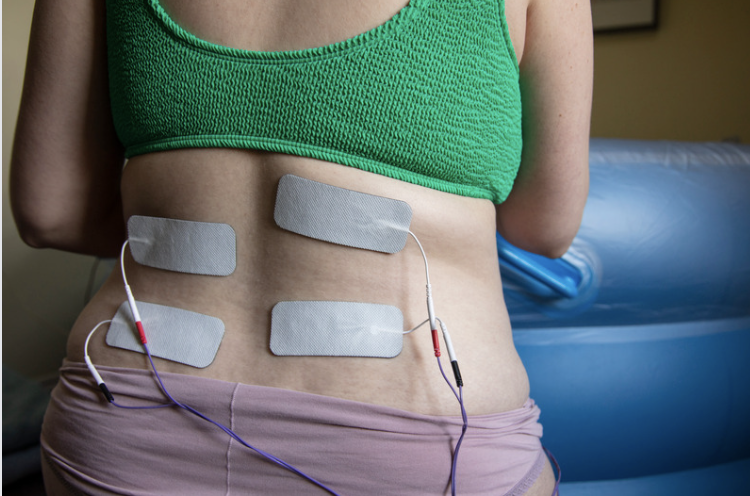More Labor Comfort Techniques
Bringing a new life into this world is an incredibly transformative experience, one that can be both exhilarating and challenging. For many birthing people, the prospect of labor can be daunting, filled with uncertainties and discomforts. However, there are various techniques and tools available to support them through this journey, promoting comfort and empowerment during labor. In this blog post, we'll explore the benefits of utilizing abdominal lifts, counter pressure, Transcutaneous Electrical Nerve Stimulation (TENS) units, and squats to enhance comfort during labor.
Abdominal Lift
Abdominal lifts, also known as the "abdominal lift and tuck" technique, is a simple yet effective method for relieving pressure and discomfort during contractions. This technique involves gently lifting the belly upwards while simultaneously tucking the pelvis under. Doing this can help alleviate strain on the lower back and pelvis, providing relief and promoting relaxation. Additionally, abdominal lifts can encourage optimal positioning of the baby, facilitating a smoother labor process. This is something your doula could do throughout birth or another support person. Pro Tip: Many pregnant folks really love this before birth, especially in the last weeks of pregnancy when the baby has dropped and everything is feeling extra heavy!
Counter Pressure
Counterpressure is a widely recognized technique for managing pain and discomfort during labor. It involves applying firm pressure to specific areas of the body, such as the lower back or hips, to counteract the sensations of contractions. Partners, other support people, and/or doulas typically use their hands or fists to administer counterpressure effectively based on what the birthing person wants. This technique can help distract from the intensity of contractions and provide much-needed relief, allowing laboring individuals to cope more comfortably.
TENS Unit
TENS units are portable electronic devices that deliver mild electrical impulses to the body via electrodes placed on the skin. In the context of labor, TENS units are commonly used to alleviate pain and promote relaxation. The gentle electrical stimulation can interfere with pain signals sent to the brain, effectively reducing the perception of discomfort. TENS units are non-invasive and safe to use during labor, offering a drug-free alternative for pain management. Many women find them particularly helpful during the early stages of labor or as a complement to other comfort measures. I have a TENS unit that I keep in my birth bag that I offer to clients when they’re in labor and on some occasions, clients have had their own units they’ve used for early labor while at home or while at the hospital. Ask your doula if they have one you can use if this is of interest to you.
Squats
Squats are a natural and beneficial movement for labor preparation and progression. The squatting position opens up the pelvic outlet, allowing more room for the baby to descend. This can help facilitate labor and reduce the duration of the pushing phase. Additionally, squats engage the leg muscles and promote circulation, which may help alleviate discomfort and fatigue during labor. Incorporating squats into the laboring process can enhance both physical comfort and the progress of labor. This is also a position that some folks give birth in - whether medicated or unmedicated, depending on how much movement they can handle if an epidural is on board.
Labor is a unique and individual journey, and there is no one-size-fits-all approach to managing its challenges. However, by incorporating techniques such as abdominal lifts, counter pressure, TENS units, and squats, expectant mothers can enhance their comfort and sense of control during labor. Whether used alone or in combination, these methods offer valuable tools for navigating the intensity of childbirth and promoting a positive birth experience. As always, it's wise to discuss any pain management strategies with healthcare providers and to tailor them to your individual needs and preferences. With proper support and preparation, birthers can approach labor with confidence and resilience, embracing the transformative journey of childbirth.
Don’t have a doula and wondering how you’ll be able to remember all that you’ve learned from this post (and this one)? Not sure as the support person you’ll know exactly what techniques to suggest at various stages of labor? I’ve got you covered! My affordable, easy-to-use, two-page guide to labor comfort techniques covers all of the ideas mentioned in this post and more!


